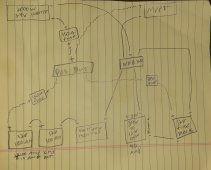Desertsparky
New Member
- Joined
- Jul 7, 2022
- Messages
- 12
Excuse the yellow pad picture but I didn't feel like learning a drawing app. I'm no artist haha.
The current plan us 1/0 welding wire for almost everything except the buck converter. I didn't put it in there but I will have some form of disconnect or breaker coming in from solar panels and battery.
The current plan us 1/0 welding wire for almost everything except the buck converter. I didn't put it in there but I will have some form of disconnect or breaker coming in from solar panels and battery.



